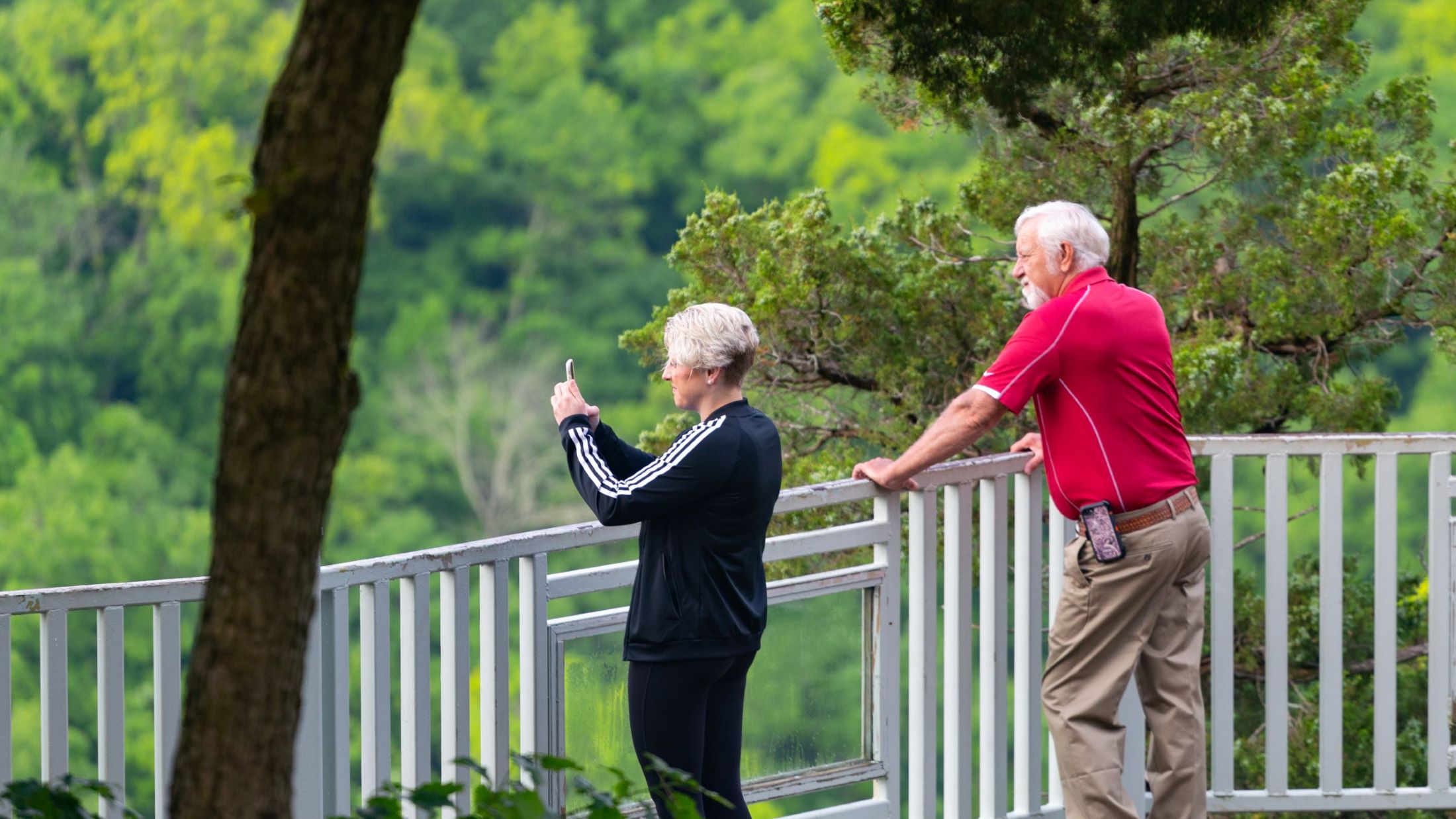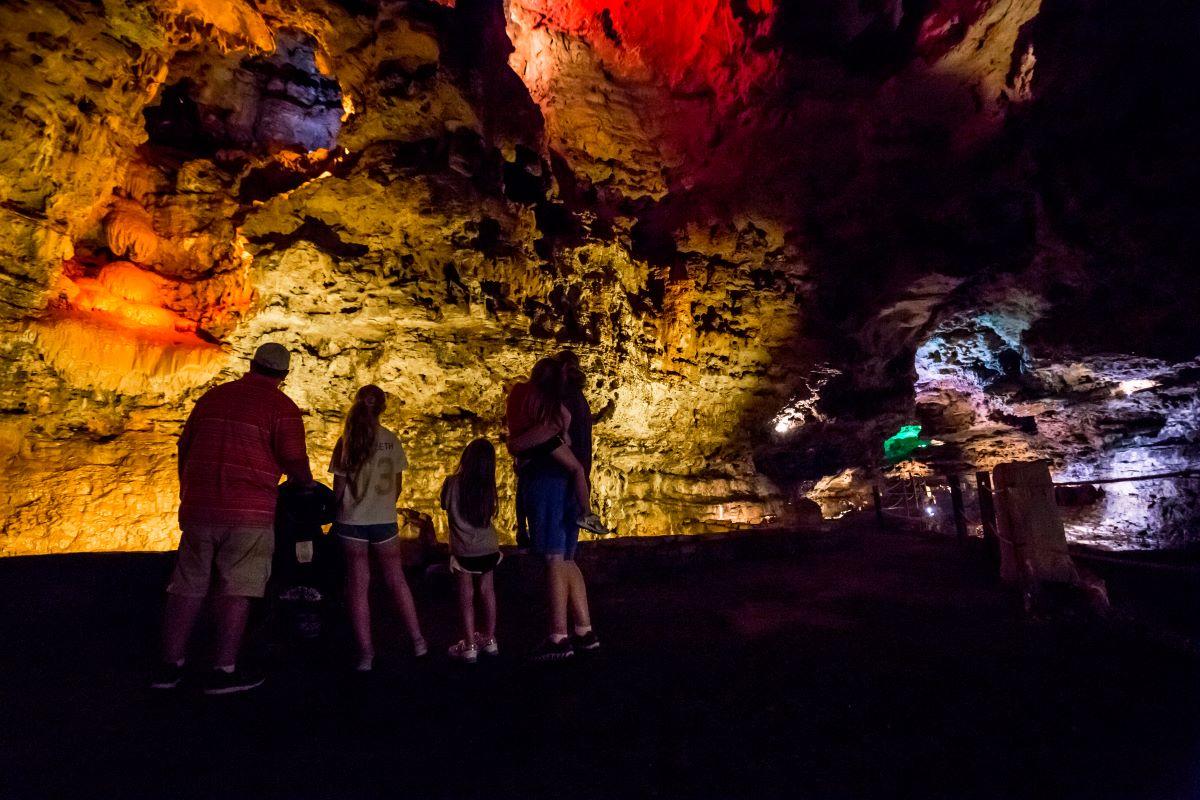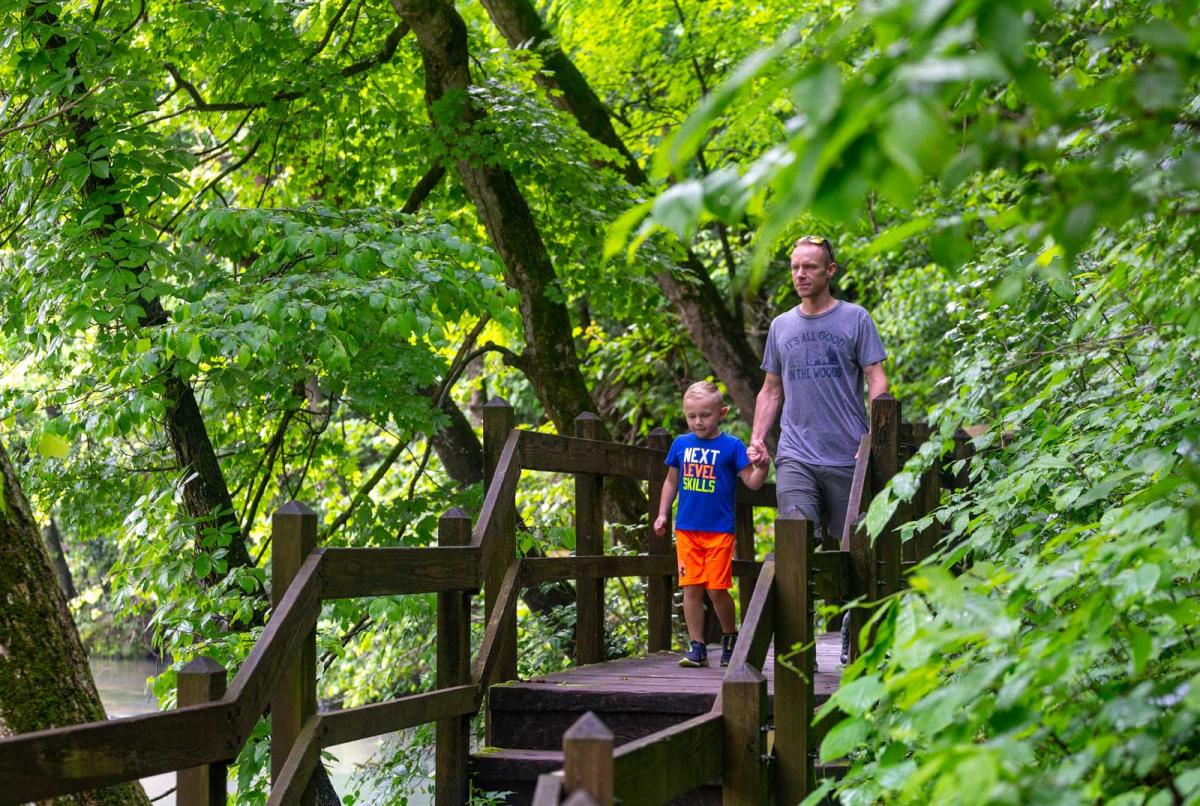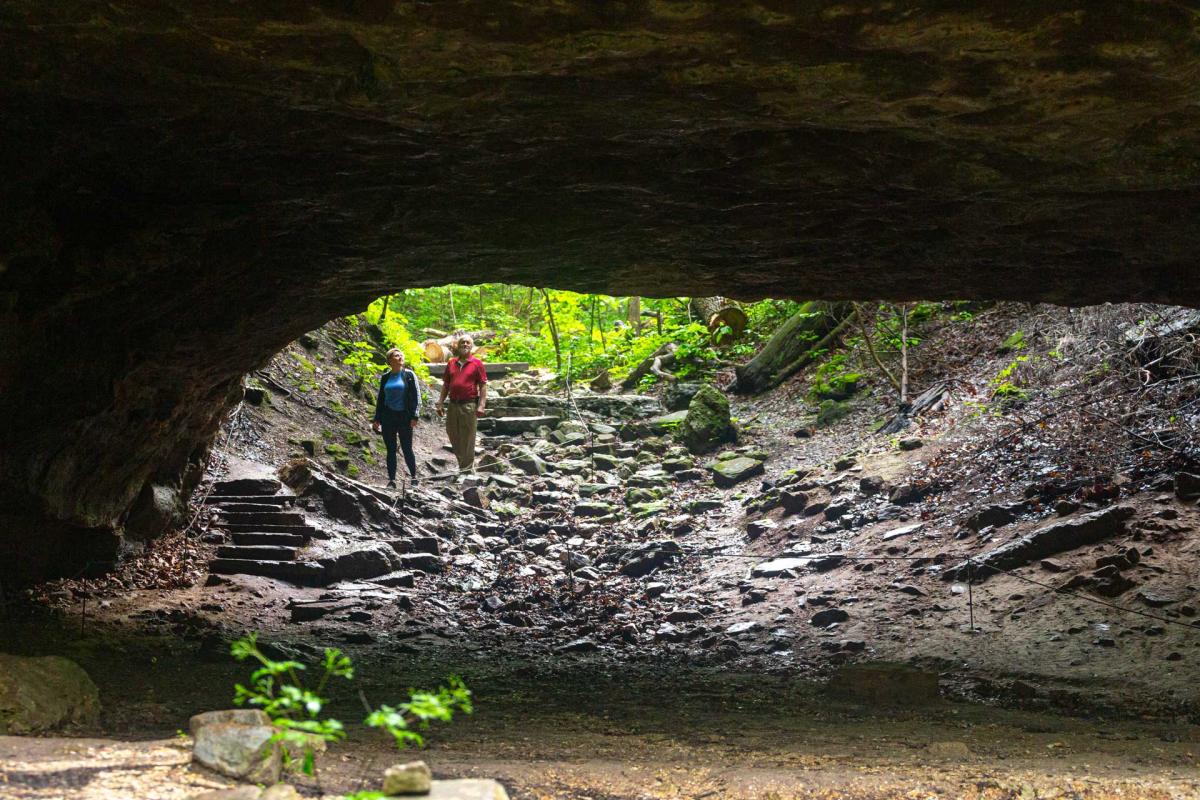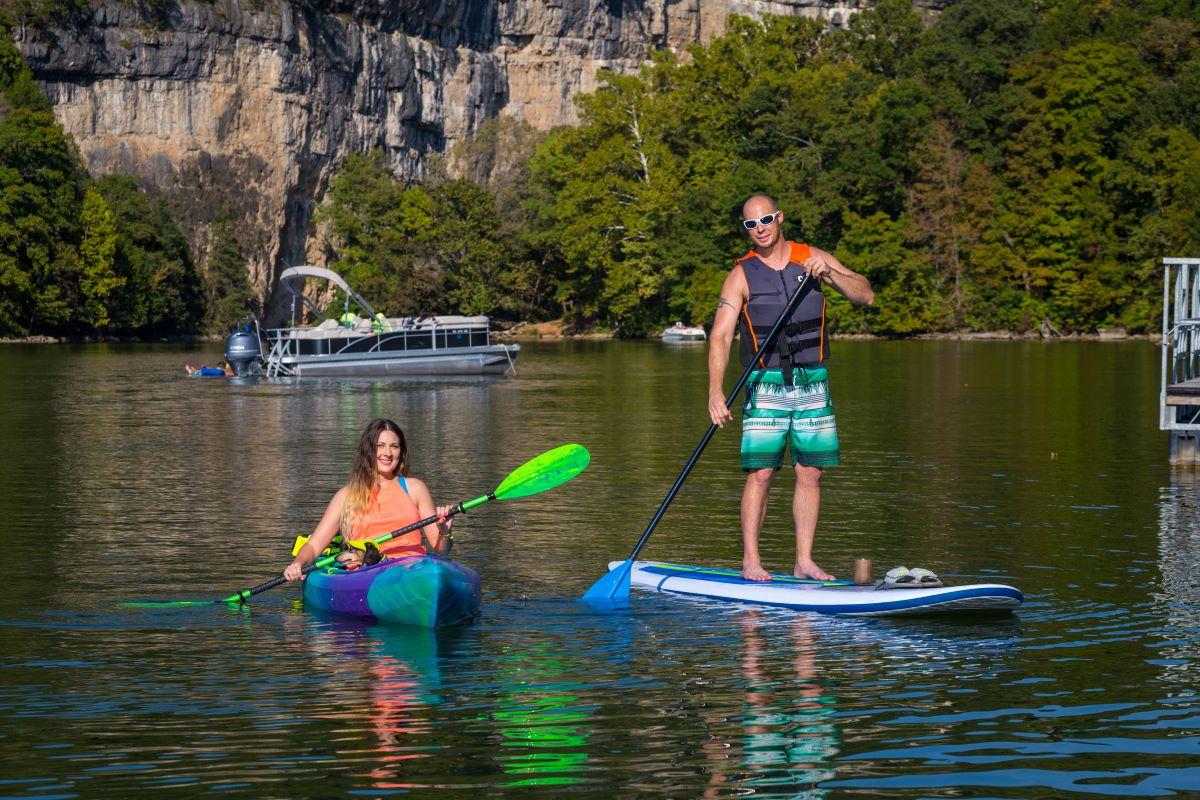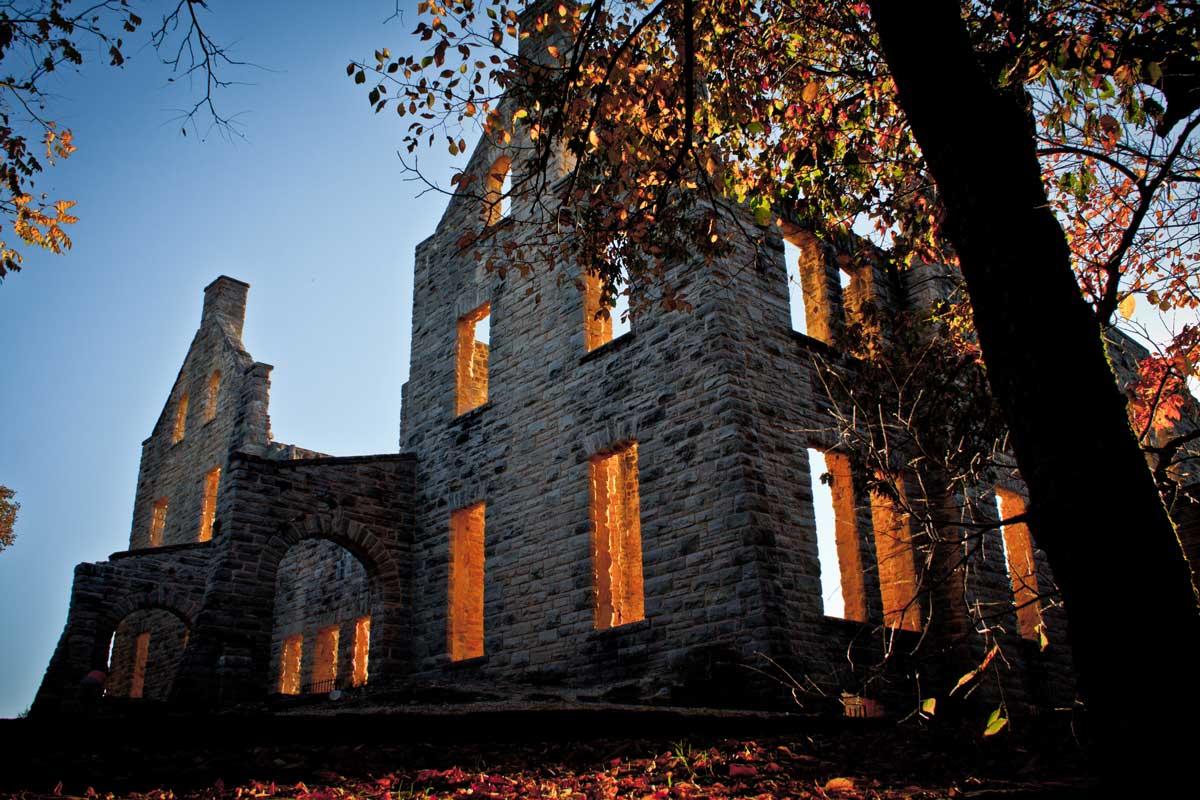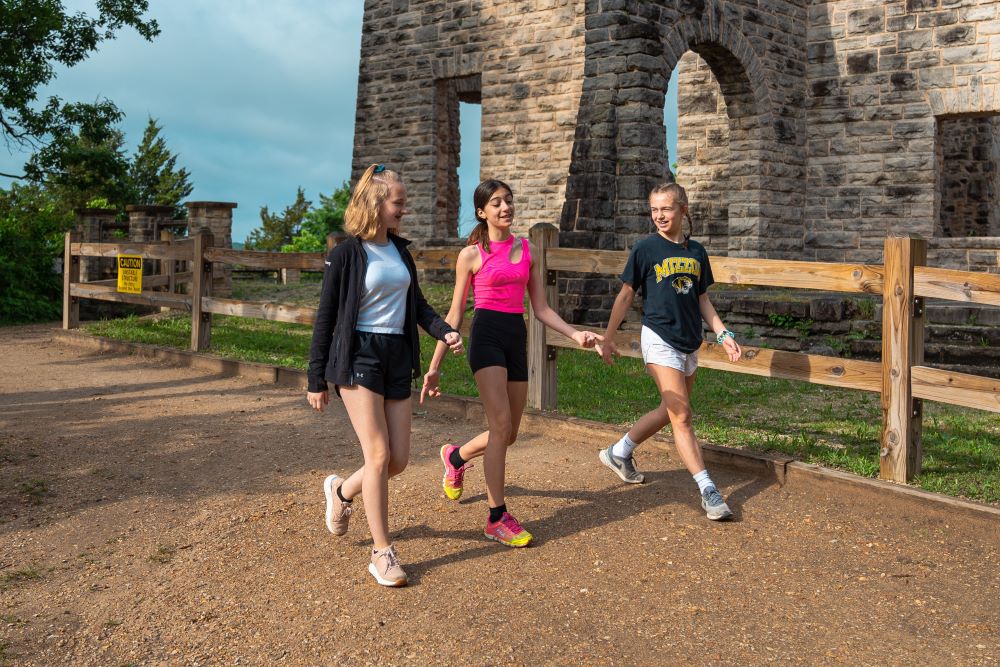
Natural Wonders
Discover the Lake of the Ozarks natural beauty at one of our beautiful state parks. Lake of the Ozarks State park is Missouri's largest state park and Ha Ha Tonka was voted one of the nation's best state parks.
Lake of the Ozarks State Park
Park Office: (573) 348-2694
Ozark Caverns: (573) 346-2500
Many lake area visitors don't realize a 17,441 acre playground lies just to the south of Osage Beach. Lake of the Ozarks State Park is Missouri's largest and can provide a pleasant diversion while vacationing in the Lake area. The park has 85 miles of shoreline and two public beaches, plus boat launching areas. Lee C. Fine Memorial Airport has a 6,500 by 100-ft. runway, plus terminal building, parallel taxiway, fuel and tiedown service. Hiking trails and four organized youth camps are offered.
The Grand Glaize Arm of the lake dissects the park with over 85 miles of shoreline. You will discover many of the park's facilities along this water corridor at the Grand Glaize Beach, 1.5 miles south of the Grand Glaize Bridge on Hwy 54 in Osage Beach and at Public Beach #1 at the end of Hwy 134.
Bring a picnic dinner to enjoy after swimming at the free sand beaches found in both areas. For large groups, reserve a picnic shelter for a $40 fee to guarantee its use or take your chances and use it on a first-come, first-serve basis when not reserved. Launch your own boat at the available ramps (minimal launching fee at Grand Glaize Beach and Public Beach #1; free launch at McCubbin Point). Rent a boat at PB#1 and Grand Glaize Beach. Fish free from a dock with crappie beds, as long as you have the appropriate Fishing license!
Discover unusual natural features along the park's lake shore on Lake of the Ozarks Aquatic Trail . This unique "trail" designed for boaters has stops marked by buoys. A free booklet keyed to these buoys explains the significance of each of the 14 marked shoreline highlights. It is available at the park office.
Naturalists present programs in an open air amphitheater from May until mid October, featuring slide shows or movies about natural features found in Missouri¹s state parks. Guided hikes and a variety of other programs are provided as well.
Many lake visitors escape the summer¹s heat by exploring 56° Ozark Caverns. Follow Highway A (between Osage Beach and Camdenton) for eight miles and follow the signs. After paying a small fee, hand held lanterns are provided which enhance the sense of discovering a whole new world of underground beauty. The spectacular Angel's Shower, a never-ending flow of water which seems to fall from the solid ceiling of rock into two massive bowl shaped stone basins on the cave floor, is one of the many features pointed out by your guide. Unusual animals, adapted to this world of darkness, can be seen as well.
Ozark Caverns Visitor Center opened in 1987 and helps visitors understand the cave environment. The one mile Coakley Hollow Self-Guided Trail near the Visitor Center takes visitors through one of the most scenic and naturally diverse parts of the park. This is one of ten trails in the park. A Trail Center on Highway 134 gives information on interesting features along these trails. Immediately behind it, Woodland Trail takes you into Patterson Hollow Wild Area, 1,200 acres which are completely undeveloped. A park trail and wild area guide gives additional information and is available at the park office.
Ha Ha Tonka State Park
Park Office: (573) 346-2986
It contains over 3,600 acres on the Niangua Arm of the Lake of the Ozarks and is located five miles southwest of Camdenton on State Road D.
There are 12 hiking trails (16 miles total) of various length which take you to such places as Devil¹s Kitchen and Turkey Pen Hollow and there are 8 known caves. The park has numerous picnic areas, two of which are shelters that can be rented for events and a playground. A Trail and Natural Area Guide is available at the visitor's center at the park entrance, along with outside exhibits. Visitors for the day can easily arrive by boat or car. (No overnight camping.)
Around the turn of the century, Robert McClure Snyder, a prominent Kansas City businessman, learned of the beauty of the Ha Ha Tonka area and journeyed there. He was so impressed with its rugged grandeur that he began purchasing much of the surrounding land and eventually acquired over 5,000 acres.
He hatched the dream of building a private retreat that would rival European style castles. He imported stone masons from Scotland and a European supervisor was hired to ensure authentic construction techniques. Kansas City architect, Adrian Van Brunt, designed the three-and-a-half story masterpiece. A central hallway rose the entire height of the building. In addition, a stone stable, an 80-foot-tall water tower and nine greenhouses were built on the estate. The stone and timber used in construction were taken from the immediate vicinity and hauled by mule team. Construction of the complex began in 1905.
But for Snyder, Ha Ha Tonka remained only a dream. In 1906, he was involved in a car accident on Independence Boulevard in Kansas City and was killed (he was one of the first automobile owners in the city). The interior of the castle remained unfinished until 1922 when Snyder's sons, Robert Jr., Leroy and Kenneth completed the upper floors of the building.
The Snyder family then faced years of adversity in trying to keep Ha Ha Tonka in the family. They were forced to sell Snyder's natural gas supply business to Eastern interests. A long, legal battle against Union Electric ensued over the waters of the Lake of the Ozarks that were encroaching upon the natural spring-fed lake at the foot of Ha Ha Tonka cliff. They finally leased the mansion to a Mrs. Ellis who operated it as a hotel.
In 1942, all the dreams came to an end. Sparks from one of Ha Ha Tonka's many fireplaces ignited the roof and within hours the huge castle was gutted, as was the stable. What remained were the stark, devastated outside walls that still brood on the edge of the cliff. The State of Missouri purchased the estate in 1978 and opened it to the public as a State Park.
The natural surroundings equal the impressiveness of the ruins. Geologically, the area is an example of "karst" topography, characterized by sinks, caves, underground streams and natural bridges. Huge caves have collapsed and created a large theater-like pit known as the coliseum. Legend has it the coliseum was used for Native American tribal meetings. One of Missouri's largest springs is located in the park and feeds an average of 48 million gallons of water a day into the Niangua Arm of the Lake.
For those who have not yet seen the spring, castle and park, words fail to do it justice. Discovering it is something each visitor considers a personal and memorable experience.

